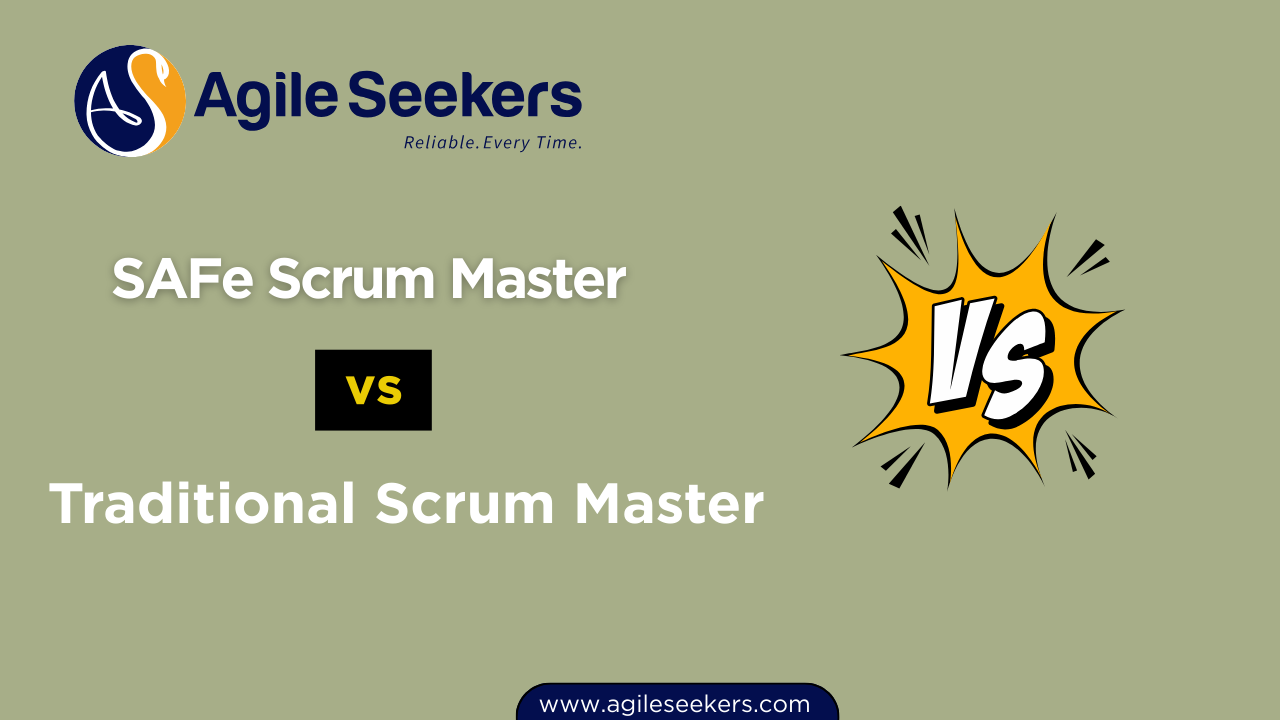SAFe Scrum Master vs Traditional Scrum Master: Key Differences You Should Know

The role of a Scrum Master has evolved significantly over the years. As Agile frameworks continue to mature and scale across organizations, the responsibilities and expectations from a Scrum Master vary depending on the environment they operate in. One of the most common comparisons professionals and enterprises face today is SAFe Scrum Master vs Traditional Scrum Master. While both roles stem from the Agile Manifesto and the principles of Scrum, their scope, impact, and skillset differ drastically.
In this blog, we’ll unpack the key differences between these two roles, help you understand which might be right for your career path, and guide you on how to prepare for the evolving demands of today’s Agile landscape.
What is a Traditional Scrum Master?
The Traditional Scrum Master operates in a team-level Agile environment. This role is typically based on the Scrum Guide, focusing on a single team, ensuring that Scrum is understood and enacted, and helping the team become high-performing by removing impediments, facilitating Scrum events, and promoting Agile values.
Responsibilities include:
- Facilitating daily stand-ups, sprint planning, reviews, and retrospectives
- Removing blockers that hinder the team’s progress
- Coaching the team on Agile principles
- Protecting the team from external disruptions
- Working closely with the Product Owner to refine the backlog
What is a SAFe Scrum Master?
A SAFe Scrum Master (SSM) operates in a scaled Agile environment where multiple teams work together towards a common business goal. Unlike the Traditional Scrum Master, the SAFe Scrum Master plays a crucial role in synchronizing efforts across multiple Agile teams as part of an Agile Release Train (ART).
The SAFe Scrum Master Certification equips professionals to operate in large, complex systems and adds responsibilities like:
- Supporting PI Planning and execution
- Collaborating with RTEs and Product Management
- Facilitating cross-team alignment and execution
- Driving Lean-Agile mindset adoption
- Supporting DevOps and continuous delivery pipeline initiatives
Key Differences: SAFe Scrum Master vs Traditional Scrum Master
| Criteria | Traditional Scrum Master | SAFe Scrum Master |
|---|---|---|
| Scope | Focused on one Agile team | Team and program-level across multiple teams |
| Framework | Scrum Guide | Scaled Agile Framework (SAFe) |
| Certifications | CSM, PSM | SAFe SSM Certification |
| Collaboration | Product Owner and Dev Team | RTEs, Product Mgmt, System Architects |
| Program-Level Activities | Not involved | Facilitates and supports PI Planning |
| Leadership Role | Servant leader for one team | Coach and leader across the ART |
| Tool Proficiency | Basic Agile tools | SAFe tooling and dependency management |
| Change Management | Team agility | Lean-Agile transformation at scale |
| Training Required | Scrum basics | SAFe Scrum Master Training |
| Metrics Focus | Team velocity, sprint goals | PI Objectives, ART progress |
Why SAFe Scrum Masters Are in High Demand
As more organizations embrace enterprise-scale Agile practices, the demand for SAFe-certified Scrum Masters is rising. Enterprises need structured coordination across functions, which SAFe enables. Completing an SSM certification positions professionals to thrive in these complex environments.
Which Role Is Right for You?
If you're new to Agile, starting with the Traditional Scrum Master path makes sense. But if you want to advance into enterprise roles, drive large transformations, and lead across teams, becoming a SAFe Scrum Master is your next step.
Final Thoughts
The choice between SAFe Scrum Master vs Traditional Scrum Master comes down to scope and impact. Traditional Scrum Masters focus on team agility, while SAFe Scrum Masters operate on a broader, enterprise scale. To stay competitive in today’s Agile world, equipping yourself with the right certification and mindset is crucial.
Interested in becoming a SAFe-certified Scrum Master? Check out AgileSeekers for expert-led courses and certification support.




















